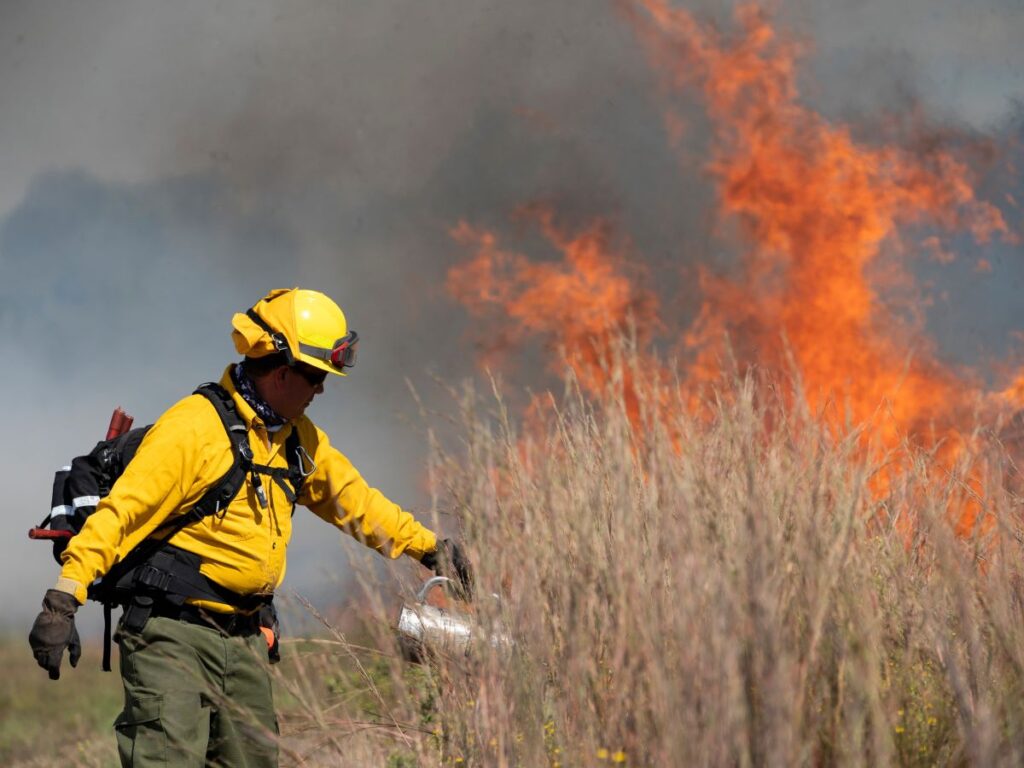Preparation
Prescribed fires are thoroughly planned and have a clear goal. These factors and others are included in a burn plan.
Burn plans are created by a burn manager before a prescribed fire. They account for the parameter of the fire, smoke management instructions, weather, hazards, contingencies, vegetation and surface information, and more.
In preparation for a prescribed fire, fire breaks are installed around the unit’s perimeter to keep the fire within the specified area. These are typically bare, mineral soil breaks that are created by dozers or hand tools. They can also include mowed breaks, burned or black lines, wet lines, or hand-cleared lines.
Implementation
On the day of the burn, the burn manager reviews the original burn plan and initiates the “Go/No-Go” checklist. The list ensures proper notifications are made, safe weather parameters are met, fire breaks are checked, and that the fire can be conducted as safely as possible.
If conditions are met, a test burn is performed in a downwind corner of the unit in representative fuels to verify fire behavior, smoke dispersal, and if the prescribed burn meets management objectives.
If the test burn results are not satisfactory, the prescribed burn is postponed. If they are satisfactory, personnel use drip torches to slowly ignite the fire and patrol containment lines.
By engaging with local support agencies, prescribed fires can serve as a great way to prepare for wildfires across the state.
